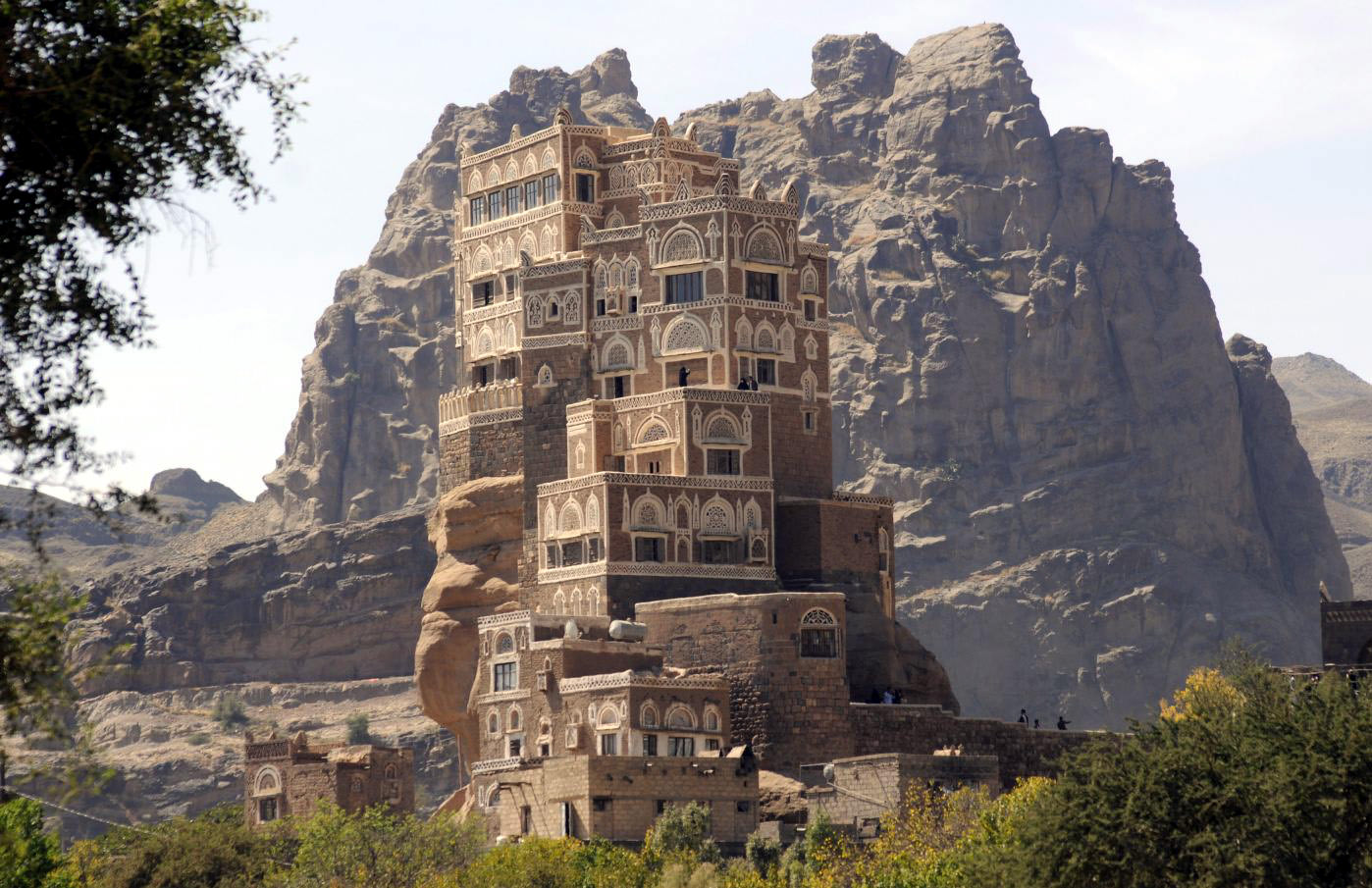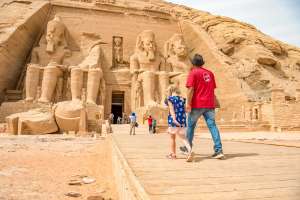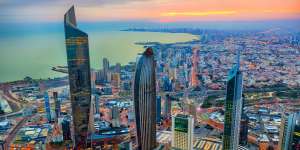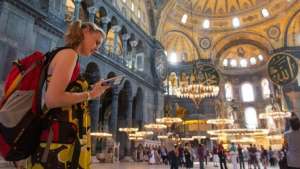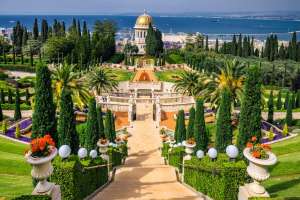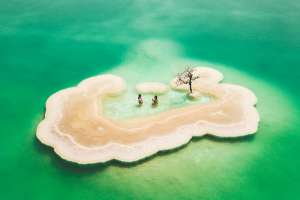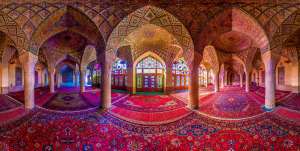Yemen is a land of contrasts—where the vast Arabian desert meets ancient architecture, rugged mountains, and remote islands filled with life forms found nowhere else on Earth. Once known in antiquity as the Kingdom of Sheba, Yemen’s rich history is woven into Biblical tales, early Jewish and Christian influences, and later, the rapid spread of Islam during the 7th century. This country holds the soul of the ancient world in its soil—stone palaces carved into cliffs, walled villages perched high above clouds, and marketplaces that have thrived for centuries.
Although the nation has suffered through turmoil since 2011, its beauty and heritage remain undeniable. From surreal islands and medieval towns to architectural wonders, Yemen still holds some of the most extraordinary destinations in the Middle East—waiting for peace to restore their place on the world’s travel map.
Socotra Island

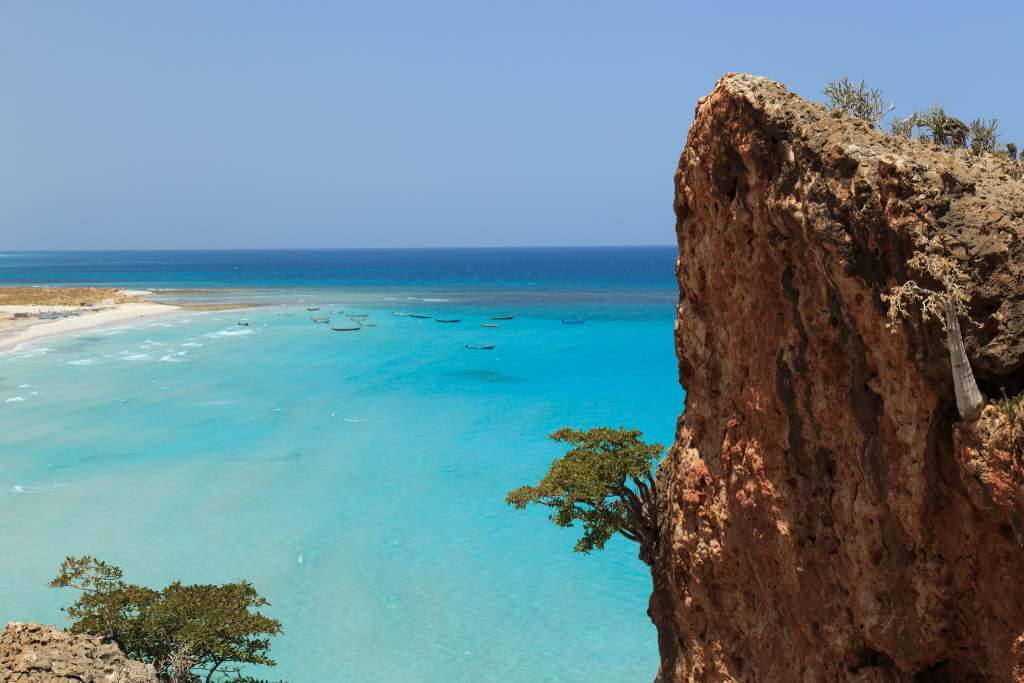

Among the jewels of Yemen, Socotra Island stands in a league of its own. Situated between the Arabian Sea and the Guardafui Channel, it is one of the most isolated continental landmasses on Earth. This remoteness gave rise to a bizarre and mesmerizing ecosystem—home to the famed dragon’s blood trees, rare pink desert roses, and a unique variety of frankincense trees that grow nowhere else on the planet.
Many describe Socotra as “the most alien-looking place on Earth,” while others romantically call it the possible site of the Garden of Eden. Its landscapes shift from snow-white beaches to golden dunes, and from rocky plateaus to the rugged Hajhir Mountains that cut through its center. The island’s small population—descendants of Yemeni, Somali, and Comorian origins—live largely off fishing, farming, and trading incense and aloe. For biologists and adventurers alike, Socotra remains one of Earth’s last untouched frontiers.
Qalansiya Beach
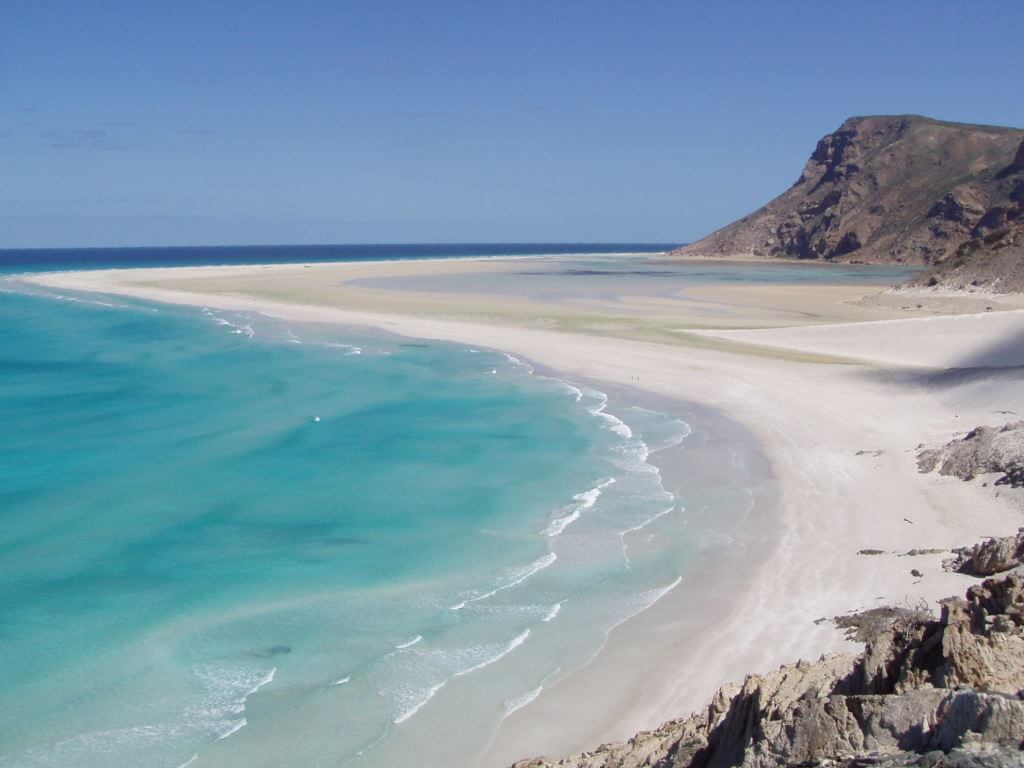
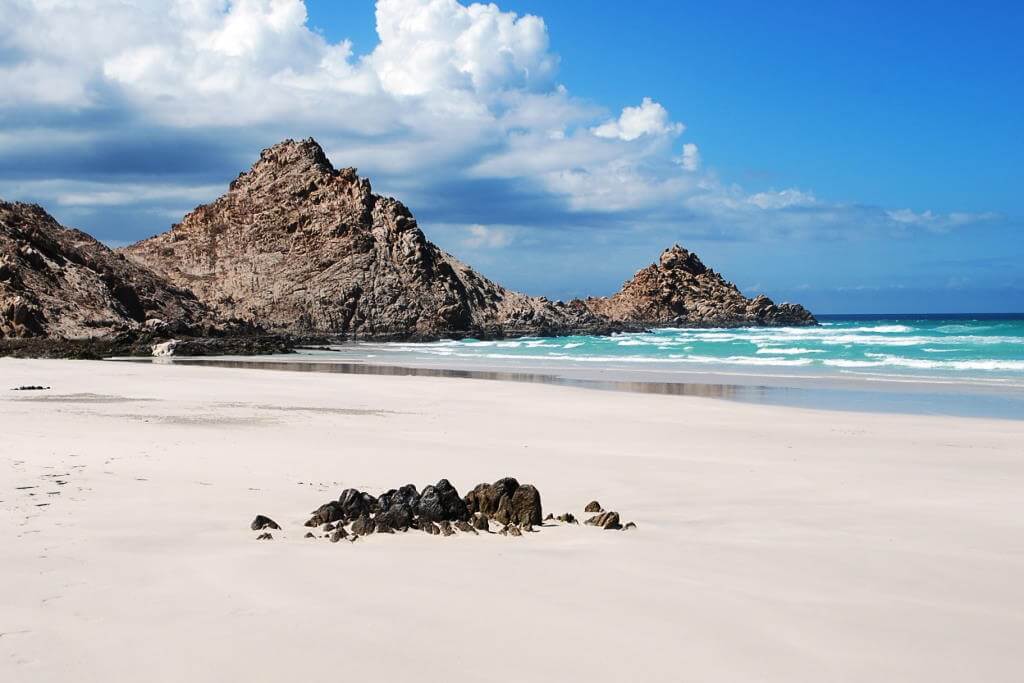
A short distance from Socotra’s second-largest settlement, Qalansiya, lies one of Yemen’s most enchanting coastal escapes—Qalansiya Beach. The brilliant white sands curve along turquoise waters so pure they shimmer like glass under the tropical sun. Just beyond, Detwah Lagoon creates a tranquil natural pool surrounded by dunes and small fishing huts.
This area is ideal for camping, swimming, and birdwatching, offering a rare sense of calm in a country often associated with conflict. During low tide, the lagoon’s shallow waters reflect the clouds, creating surreal mirror-like views that feel almost dreamlike.
Sana’a
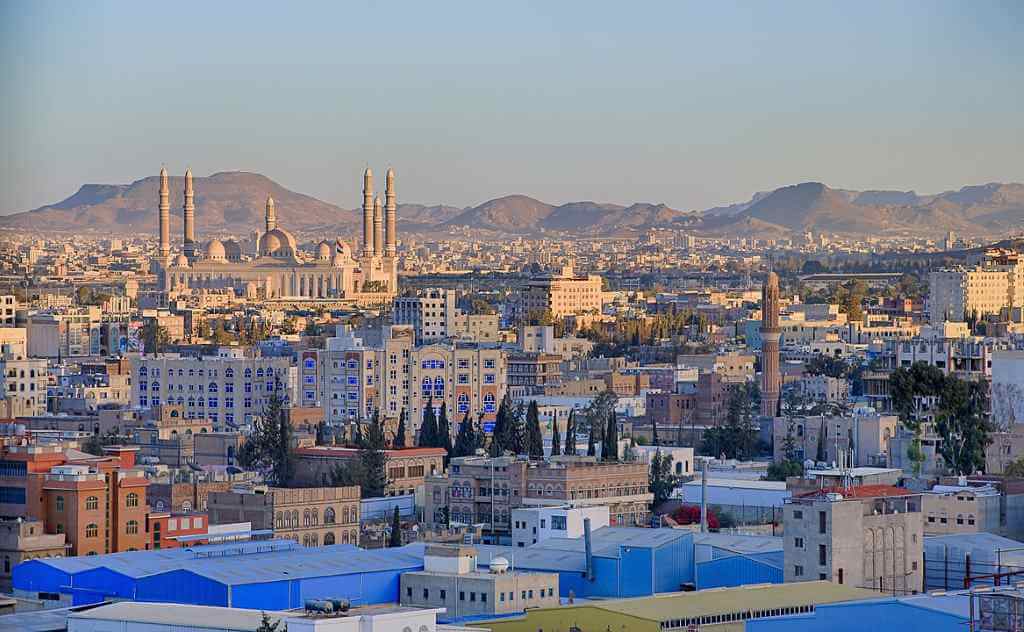
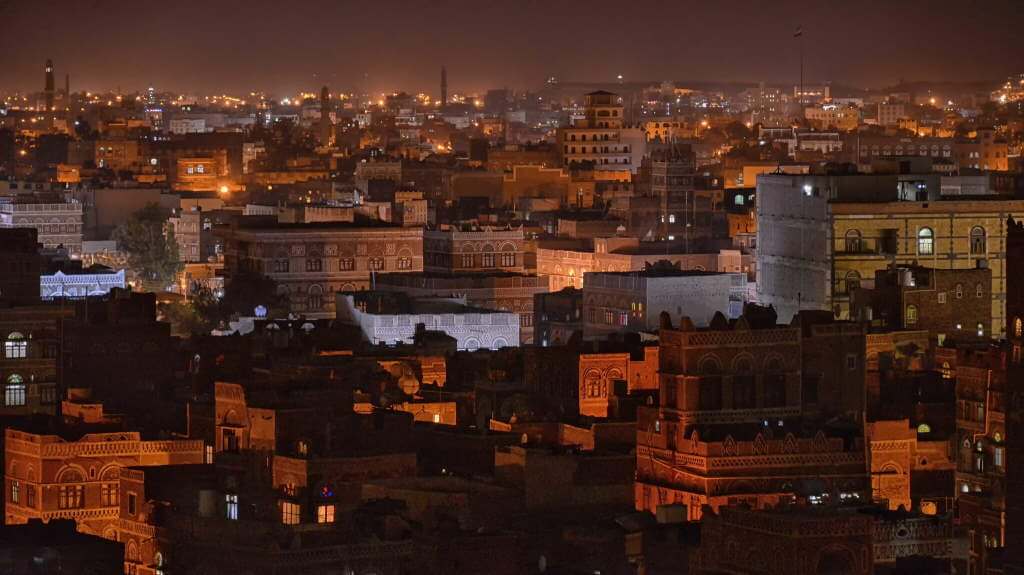
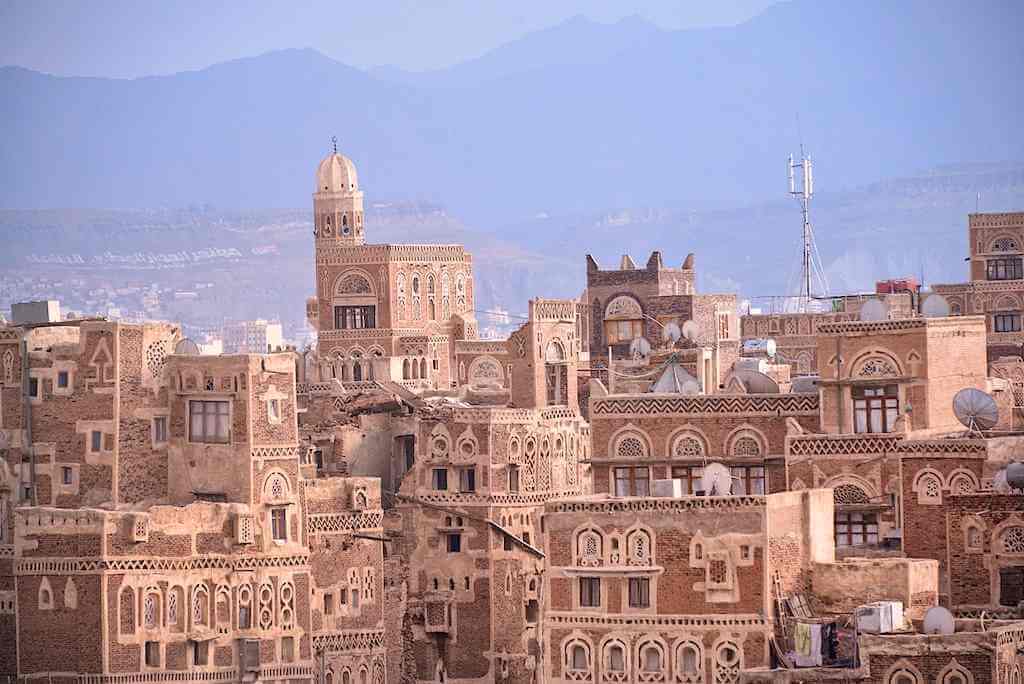
At an elevation of over 2,300 meters above sea level, Sana’a—Yemen’s capital—stands as one of the highest capital cities in the world and one of the oldest continuously inhabited cities on Earth. The Old City of Sana’a is a masterpiece of Islamic architecture: its iconic multi-storied houses, adorned with geometric patterns and white gypsum outlines, seem almost like gingerbread castles stacked against the highland sky.
This UNESCO World Heritage Site was once a thriving cultural hub, filled with bustling markets, ancient mosques, and traditional hammams. Sadly, years of war have left scars on this historical treasure, but the spirit of Sana’a—its narrow alleyways, ornate doors, and call to prayer echoing through its old quarter—continues to represent the heart of Yemen’s identity.
Al Saleh Mosque
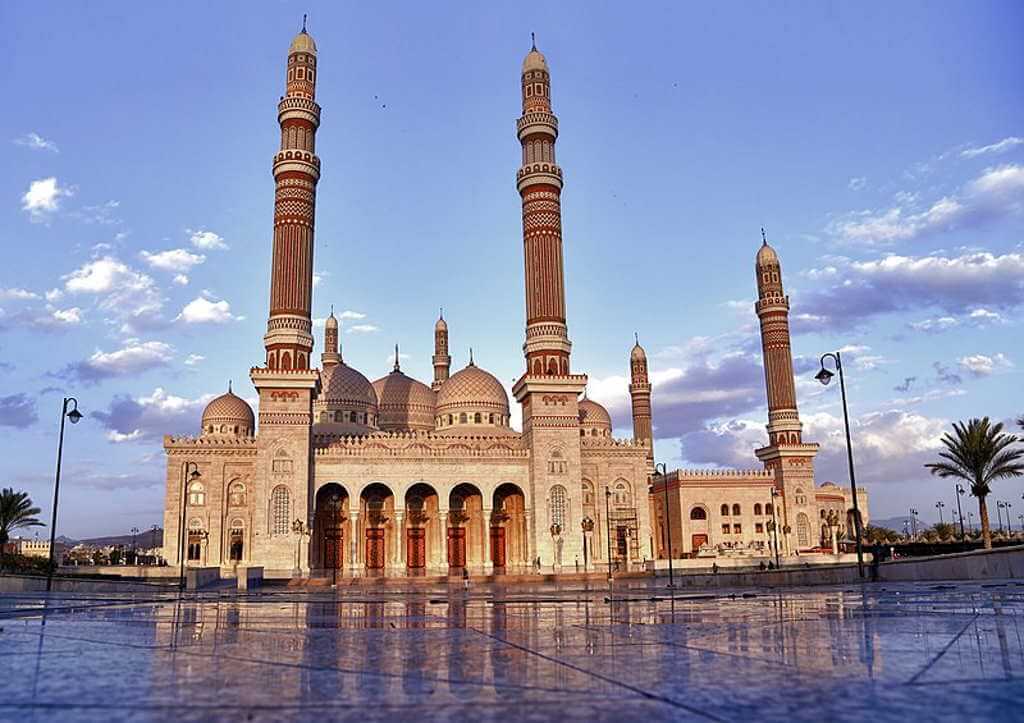
On the southern outskirts of Sana’a stands the magnificent Al Saleh Mosque, also known as “The People’s Mosque.” Completed in 2008, it is the largest and most modern mosque in Yemen, showcasing an elegant fusion of traditional Yemeni design and grand Islamic architecture.
Built with striking white marble domes, tall minarets, and intricate stone carvings, the mosque can accommodate thousands of worshippers. What sets it apart, however, is its openness—non-Muslims are also welcomed to explore, learn, and admire its beauty. With strict security and peaceful courtyards, Al Saleh remains a symbol of Yemen’s faith and resilience even amid hardship.
Jabal Haraz
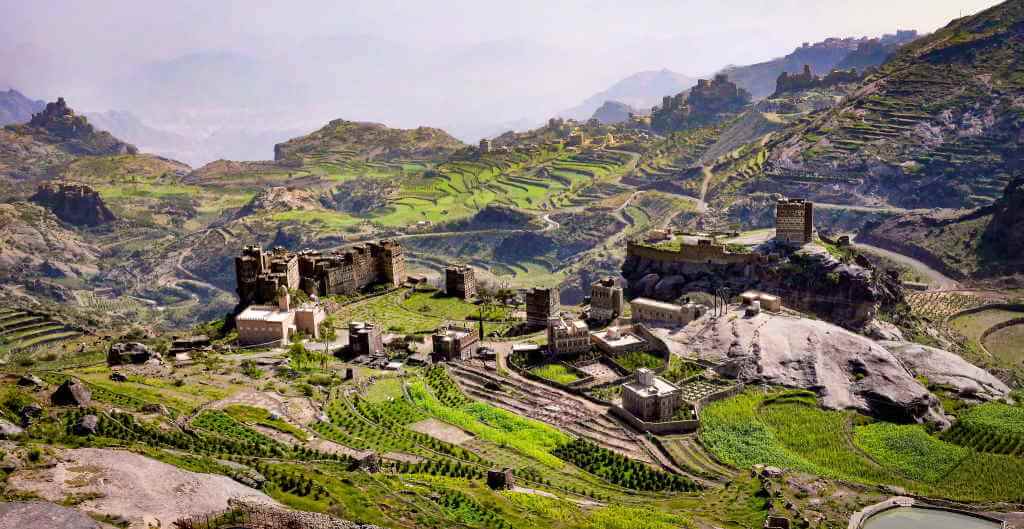
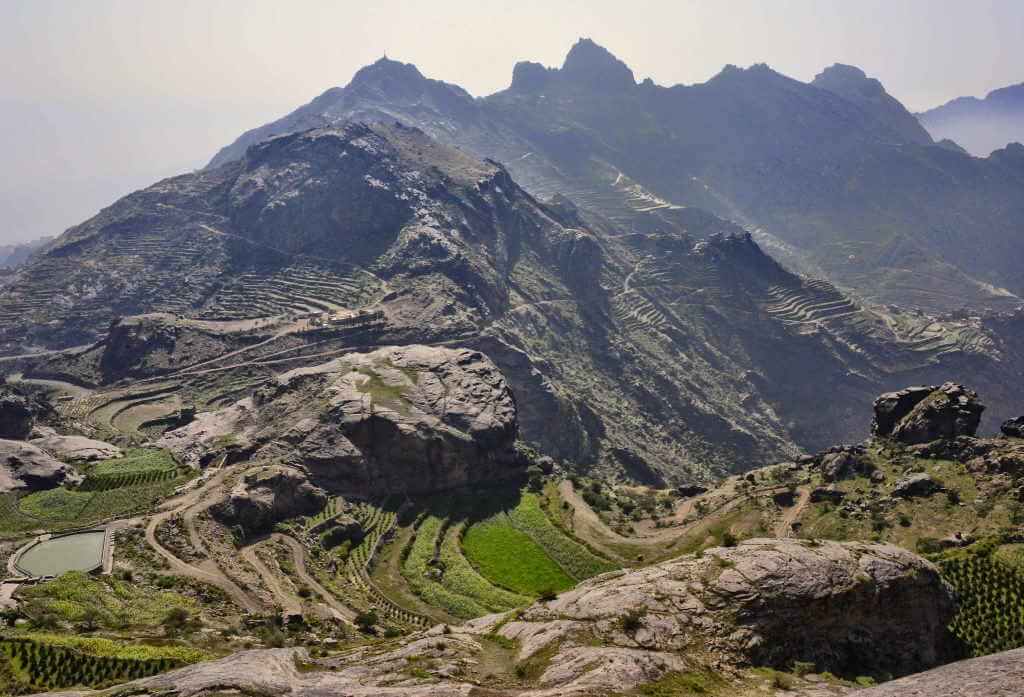
The Haraz Mountains are a breathtaking chain of highlands that rise west of Sana’a, crowned by terraced fields, ancient villages, and mist-shrouded valleys. The region’s centerpiece, Jabal Haraz, feels like a window to medieval Arabia—villages built on cliffsides resemble fortresses guarding the skies.
One of the best-preserved towns here is Al Hajjarah, a stone village perched dramatically on the mountainside. Its traditional houses—many hundreds of years old—are crafted from layered stone and mud, each stacked vertically to save space on the steep slopes. For trekkers and photographers, Jabal Haraz offers awe-inspiring views and an atmosphere untouched by modernity. Access is restricted today due to the ongoing conflict, but its heritage endures in Yemen’s collective memory.
Thula Village

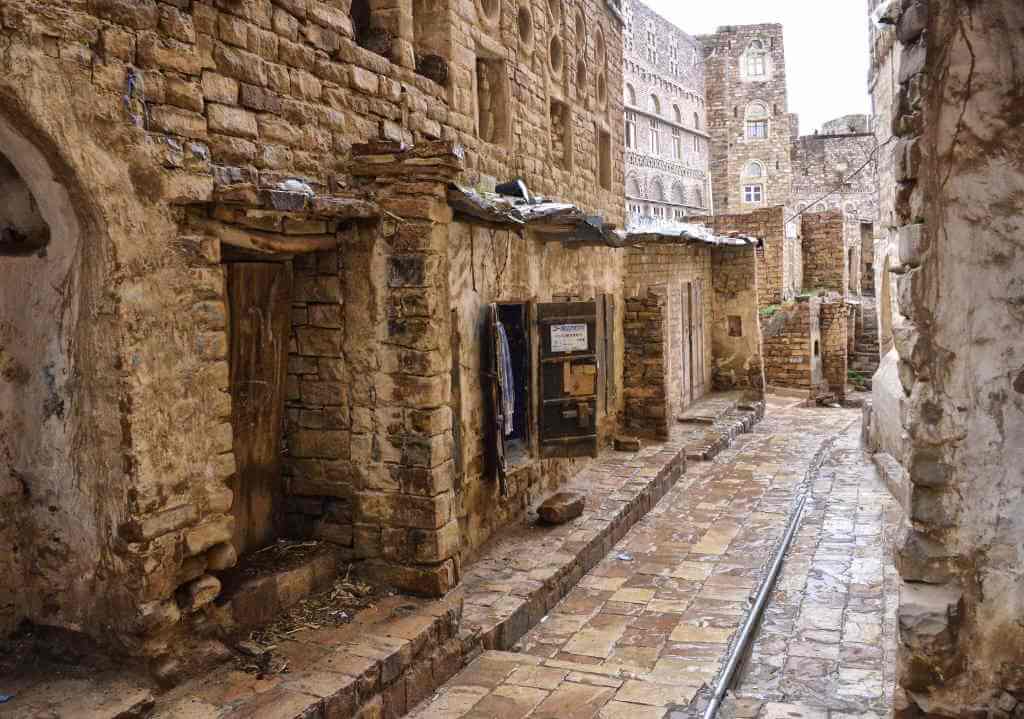
Nestled at the base of rose-tinted cliffs lies Thula Village, one of the best-preserved medieval towns in the Sana’a region. Surrounded by massive stone walls that stretch nearly two kilometers, Thula feels like stepping into a time capsule. Its narrow alleys twist between tall, ocher-hued houses—some up to five stories high—each decorated with arched windows and ornate plasterwork.
Inside the walls stand 26 watchtowers and nine gates that once protected the town from invaders. Roughly 600 houses remain in their original form, offering a glimpse of how Yemeni life looked centuries ago. The symmetry and craftsmanship of Thula’s architecture make it one of the most photogenic and culturally rich places in the entire country.
Kawkaban
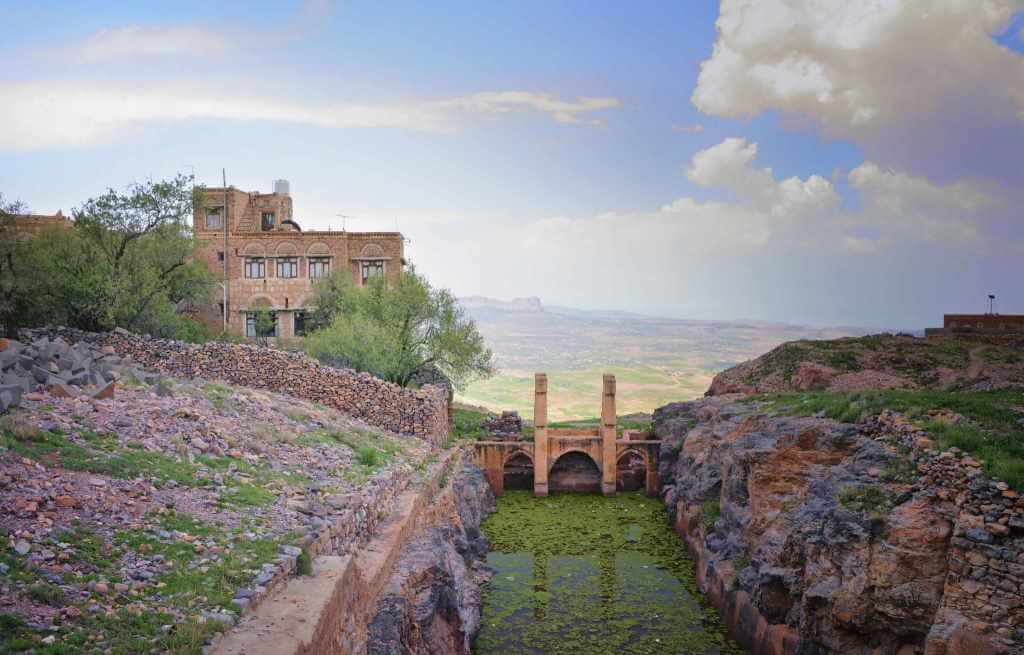

Perched high above the plains, Kawkaban once stood as one of Yemen’s most captivating fortified cities. Located northwest of Sana’a at an altitude of around 3,000 meters, this hilltop town was historically home to both Muslims and Jews, including the renowned poet Zechariah Dhahiri.
Kawkaban’s ancient mosques, elegant stone homes, and sweeping mountain views once made it a beloved destination for travelers and historians. Unfortunately, much of it suffered damage during airstrikes in recent years. Yet even in ruins, its spirit endures—the residents, known for their resilience, have begun rebuilding. Walking through Kawkaban today feels like traversing layers of history, each stone whispering stories of devotion and endurance.
Dar Al Hajar
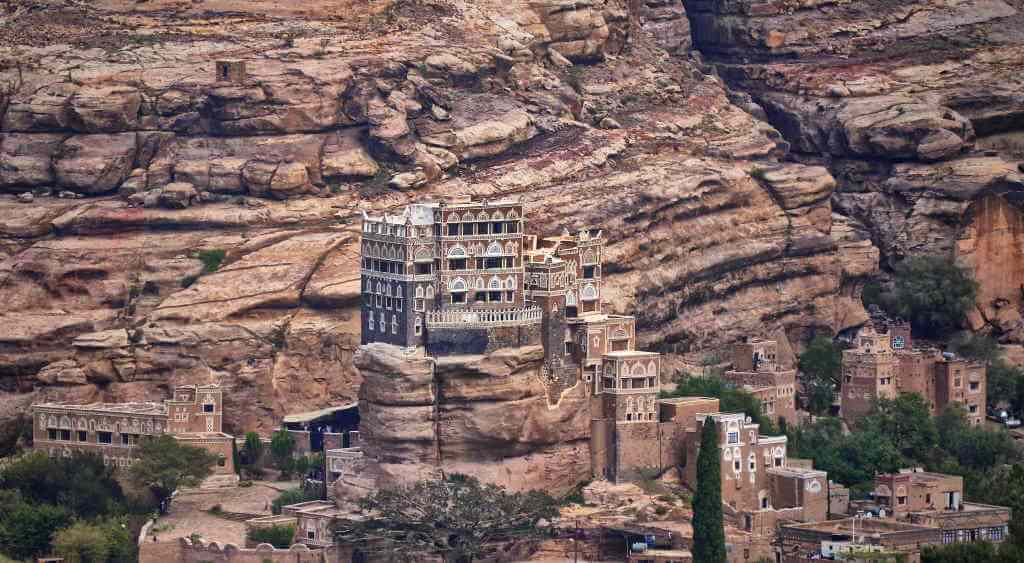
Standing like a dream sculpted in stone, Dar Al Hajar, often called the Rock Palace, is one of Yemen’s most iconic landmarks. Built in the 1930s by Imam Yahya Muhammad Hamid ed-Din atop an earlier 18th-century structure, the palace rises dramatically from a towering rock spire about 15 kilometers from Sana’a.
The five-story building seems to merge naturally with its rocky foundation—three floors soar above the cliff, while two are carved directly into it. Each level features ornate windows, arched corridors, and cool rooms designed to resist the desert heat. Once a summer residence for royalty, it’s now a museum that offers a rare glimpse into Yemen’s aristocratic past. From the rooftop, the view of Wadi Dhahr’s lush valley stretches endlessly, showing a side of Yemen that feels peaceful and eternal.
Seiyun Palace
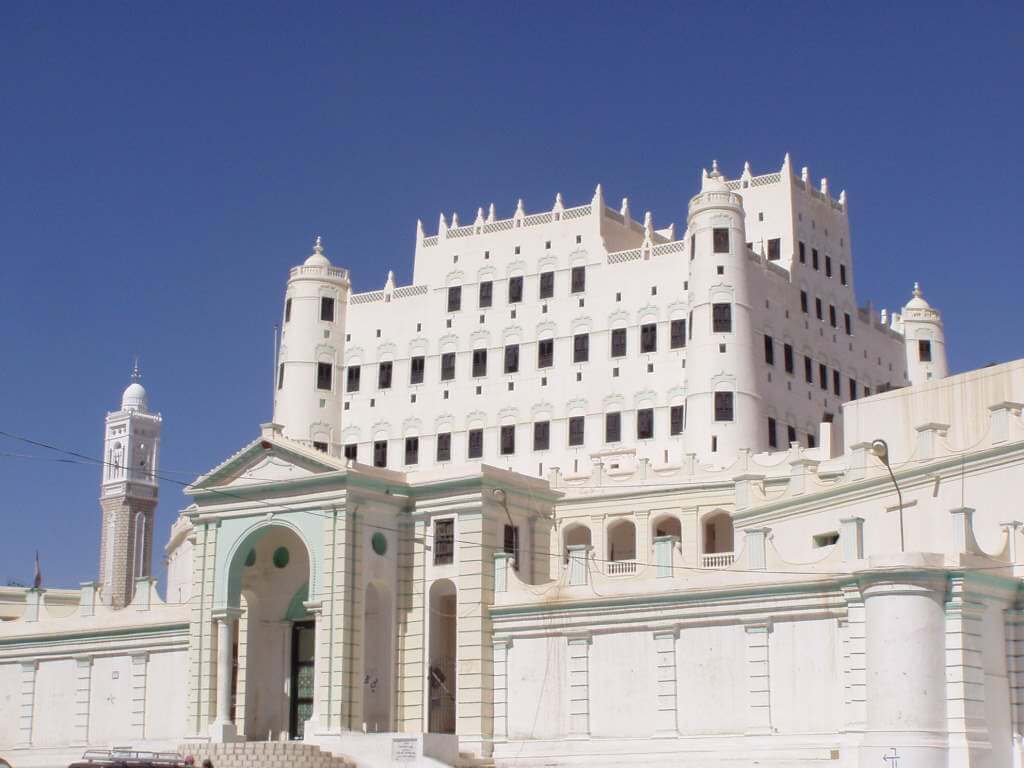
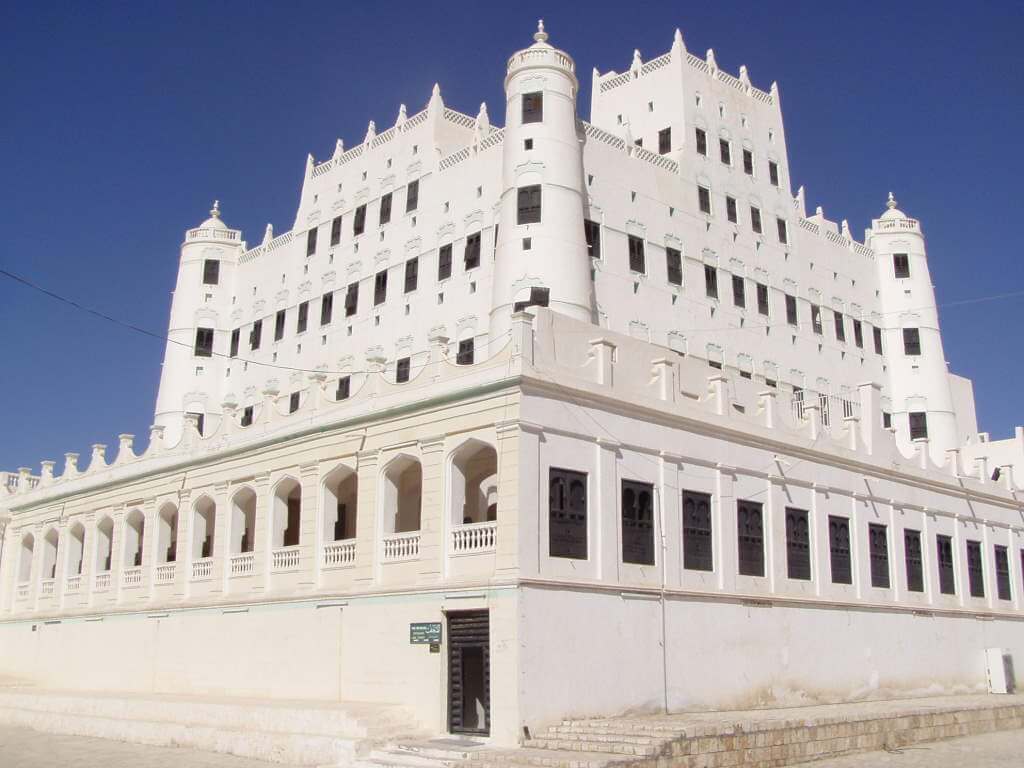
In the heart of Hadhramaut stands the Seiyun Palace, also known as the Sultan Al Kathiri Palace—a magnificent white fortress that dominates the skyline of Seiyun town. Originally built in the early 20th century atop an old fort, this grand structure once served as the seat of the Kathiri Sultanate.
Constructed mainly of mud bricks and gypsum, the palace is one of the largest mud-built structures in the Arabian Peninsula. Its bold white façade glows under the desert sun, while the interior houses Yemen’s Museum of Archaeology and Ethnography. Inside, visitors find artifacts, manuscripts, and relics reflecting the region’s complex history of trade and tribal life. Though Yemen’s instability has affected accessibility, Seiyun Palace remains a testament to the artistic mastery and historical pride of southern Arabia.
Shehara Bridge
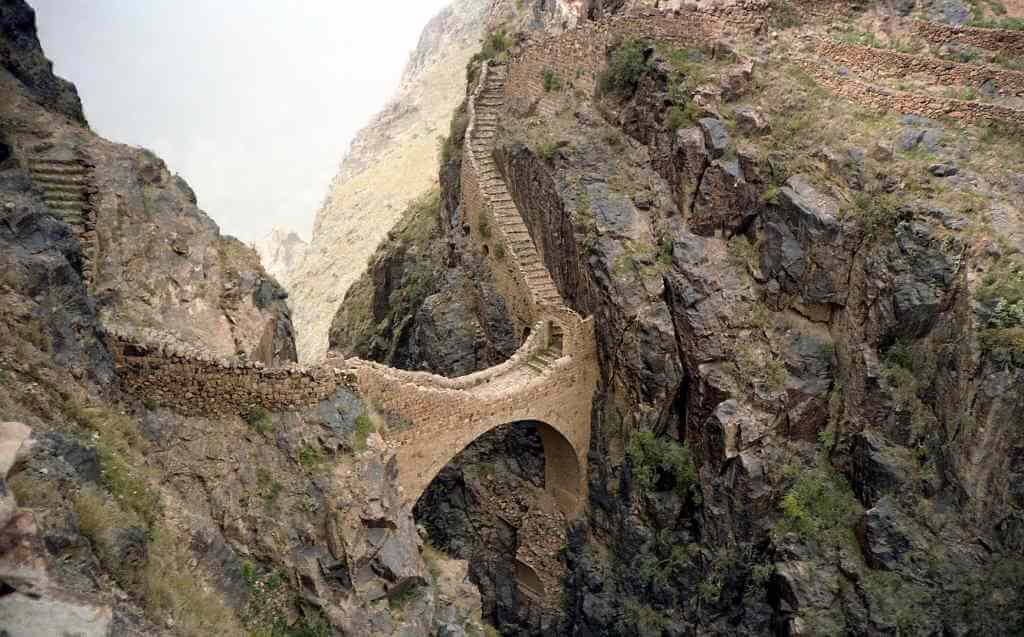
Suspended high above a canyon in northern Yemen, the Shehara Bridge—sometimes called the Bridge of Sighs—is one of the country’s most remarkable engineering feats. Built in the 17th century from limestone, it links two mountain peaks, Jabal al Emir and Jabal al Faish, separated by a deep gorge about 200 meters wide.
This 20-meter-long stone bridge was constructed under the order of a local ruler to connect isolated mountain communities, serving as both a symbol of unity and a defensive stronghold. It took three years to complete, with each stone carefully fitted without modern tools. Today, despite its age, the bridge still stands firm—a graceful arch between two cliffs, offering stunning panoramic views and a tangible link to Yemen’s storied past.
Shibam

Known affectionately as the “Manhattan of the Desert,” Shibam is perhaps Yemen’s most famous architectural treasure. This UNESCO World Heritage town, located in the Hadhramaut Valley, is home to the world’s oldest high-rise mudbrick buildings—towering structures that predate modern skyscrapers by centuries.
Built in the 16th century, the walled city features nearly 500 buildings ranging from five to ten stories high, all made from sun-dried mud mixed with straw. These vertical homes were designed both for protection and efficient land use, with narrow streets weaving between them like veins of an ancient organism. The walls are replastered annually to withstand wind and rain, continuing a centuries-old tradition of care and preservation. Inside, Shibam hosts mosques, sultans’ palaces, and community courtyards that make it one of the most historically and visually captivating places in Arabia.
Just So You Know
-
Yemen, despite its hardships today, was once called Arabia Felix, meaning Happy Arabia, for its fertile lands and thriving trade routes.
-
The habit of chewing qat, a mildly stimulating leaf, remains a popular social custom among Yemenis, often shared after meals.
-
The word “Mocha,” famous in coffee culture, originates from Yemen’s ancient port city of Al Mokha, once the heart of global coffee trade between the 15th and 18th centuries.
-
Yemen is often linked to the legend of the Queen of Sheba, whose story is told in both the Bible and the Quran, symbolizing the country’s ancient ties to wisdom and wealth.
Get Some Culture
-
National Museum of Yemen, Sana’a – Established in 1971, this four-story museum occupies an old royal palace and displays artifacts from Yemen’s earliest kingdoms, including Sabaean and Himyarite relics, manuscripts, and Islamic-era art.
-
Palace of the Sultanate of Lahej, Aden – A striking museum housed within the old Sultan’s residence. Despite damage during past conflicts, it still preserves Yemen’s most significant collection of archaeological and cultural artifacts.
Grab a Bite
-
Time Square Café, Sana’a – A modern café popular with locals and visitors alike, serving authentic Yemeni coffee, fresh pastries, and desserts in a relaxed setting. Families especially enjoy the separate kids’ area.
-
3 Friends Coffeehouse & Bakery, Mukalla – A coastal gem known for its rich Italian-style coffee, bakery items, and sweeping sea views—a favorite hangout for both travelers and residents.
Yemen remains one of the world’s most mysterious and beautiful lands—a place where time feels frozen between its deserts, mountains, and oceans. Though travel here is not yet safe, the country’s enduring architecture, deep culture, and natural beauty ensure that when peace finally returns, Yemen will once again capture the hearts of those who seek the rare and extraordinary.


